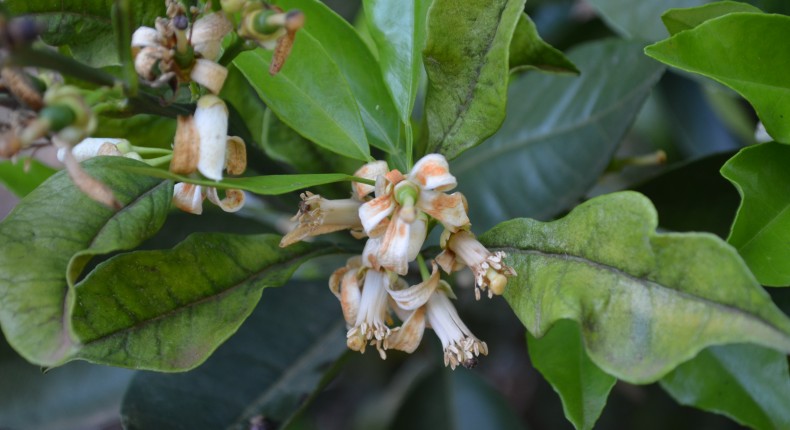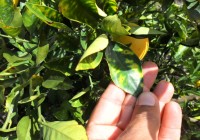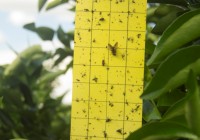28
jul

Online monitoring system developed by Fundecitrus allows a more efficient control over postbloom fruit drop in the groves
It appears timidly in the grove and, acting nonchalant, it leaves a trail of destruction in the orange blossom. In a second moment, it’s also the one that drops the fruits still growing, which can affect up to 95% of the grove’s productivity in some cases. We are talking about postbloom fruit drop (PFD), a disease known in Brazil as “estrelinha” (little star) and whose highest incidence occurs during the rainy season, like the atypical 2016’s fall and winter. With that in mind, Fundecitrus researchers created a free online system which monitors the risk of postbloom fruit drop in the groves and it works as a precise alert for the citrus grower. “One of the advantages of this system is that the citrus grower will know the right time to apply fungicide. This way, he manages to reduce the number of applications, depending on the situation, and to decrease the control costs up to 75%”, explains the researcher, Mr. Geraldo José da Silva Junior.
The program is very simple and monitors the weather conditions at the groves in real time, helping the grower to decide when it’s the best time to spray. The tool keeps a climate record and shows the percentage risk of the diseases happening or not. To use the system, the grower sets up a small weather monitoring station, which gathers the data and sends them to the Fundecitrus program by satellite. “We recommend to set up one station every 5k radius of grove”, explains Mr. Junior.
The growers registered in the program receive warnings by text messages or e-mail about the risk of incidence of the disease and the indication for spraying. “The postbloom fruit drop application must be done in a preventive way, before the rain starts, but if the plants get wet for over 48 consecutive hours, the system will indicate the need to respray the fungicide. This way, unnecessary spraying is avoided, making the control of the disease more sustainable, once it reduces the number of applications in dryer years and direct the spraying for critical moments in rainy years, decreasing the costs of production and keeping an efficient control of the disease”, explains Fundecitrus researcher, Mr. Geraldo José da Silva Junior.
When the online system receives the data, it processes information and verifies which areas there’s risk of the disease showing. These alerts are color-coordinated and it means no risk (green), moderate risk (yellow), high risk (red) and extreme risk (dark red). Whenever there’s risk, even if it’s minimum, the system sends an alert by e-mail or text message to the grower, warning them about the best date for spraying.
Fundecitrus also develops a series of training courses for growers on how to better control the disease.
The program is available in Portuguese, at http://pfc.ensoag.com. You can also access a tutorial in Portuguese which explains how the system works, at the Fundecitrus YouTube channel https://youtu.be/8Q5fBlf6Clo
- |

